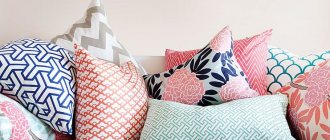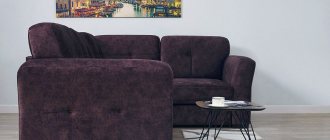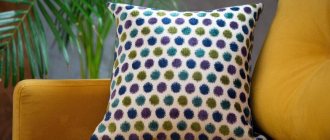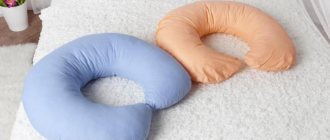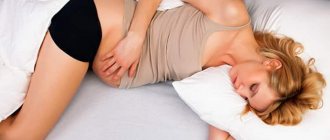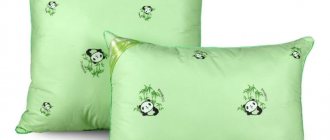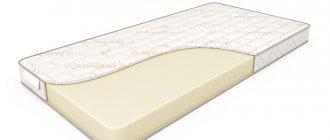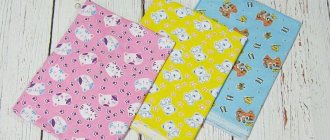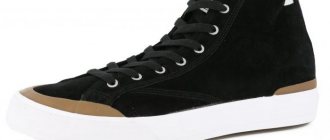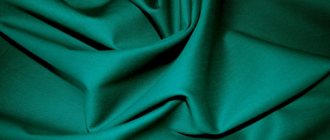A good night's sleep energizes a person and gives him excellent mood and spirit. But it is only possible by creating a comfortable atmosphere for a night's rest, an integral part of which is the pillow. There are a huge number of opinions regarding the choice of this bedding, but the main criterion should be comfort. If it is ideal in size and rigidity, the neck and head take on a physiological position, the spinal column acquires natural curves, muscle tension disappears, and blood supply to the brain improves.
Types of sleeping pillows
According to their shape, sleeping pillows are divided into 2 types:
- Classic.
- Orthopedic.
Classic
The wrong pillow can cause headaches, neck and shoulder pain, numbness in the arms, sneezing, and snoring.
They have a traditional square or rectangular shape with a length of 40 to 80 cm and a width of 30 to 50 cm with natural or artificial filling. Can be printed or solid.
Anatomical or orthopedic
This product is designed to adapt to a person's body shape.
Such products serve for a more comfortable position of the head and neck during sleep. They have the shape of a roller or rectangle with a recess, which prevents curvature of the cervical spine.
Anatomical pillows are made of several layers of special fillers - latex, polyurethane foam or “memoriform”.
Orthopedic products are indicated for various disorders of the cervical spine: osteochondrosis, injuries or displacement of vertebral bodies, torticollis, increased muscle tone, chronic pain syndrome, etc.
Depending on the type of filler, pillows are divided into:
- natural;
- from plant materials;
- artificial;
- filled with orthopedic materials;
- combined.
Synthetic fillers
Synthetic fillers are not inferior in quality to natural materials. They are easy to clean, you can wash them at least every week, they are not allergic, they maintain good air exchange, they do not absorb odors or sweat, they do not harbor insect pests, you can choose a copy of any hardness.
A latex pillow, for example, is inexpensive, and the elasticity of the product can be adjusted. The memory pillow is made of polyurethane foam, the main feature of which is the rapid restoration of its original state.
Polystyrene balls are practically weightless; they are used to make pillows for the legs and lower back to support the body in the correct position during pregnancy and illness.
Microfiber is no different from natural down. Very durable, but quickly electrified.
Rules for choosing a pillow
In order to choose the ideal pillow for sleeping, be sure to consider the following circumstances:
- the presence of allergic reactions;
- dependence of the height of the pillow on the width of the shoulders;
- the dependence of size on a person’s physique, the dimensions of bedding and bed;
- dense, breathable and lightweight cover;
- small and strong seams without holes from needles;
- favorite sleeping position;
- conditions of everyday use, cost, material;
- presence of spinal column disorders.
Animal fur
Natural sheep wool gives products high heat capacity, the ability to retain heat along with good air exchange, pleasant elasticity and weightlessness.
Products with wool wear out quickly without the possibility of restoration and washing, are not suitable for people prone to allergies, and there is a high probability of small insects appearing.
Main selection criteria
By choosing a comfortable pillow, you will greatly help your body, sleep soundly and feel good when you wake up.
When purchasing a new pillow, you need to pay attention to the following product characteristics:
- Case material.
- Filler.
- Size and shape.
- Rigidity.
Case material
The pillow cover fits closely to the human skin during night sleep.
A mandatory requirement is the naturalness of the material from which it is made.
Most often they are made from the following fabrics:
- Silk. This fabric is distinguished by its tenderness, delicacy and durability. It fits nicely to the skin. The only drawback of silk is its high cost.
- Cotton (cambric, percale, teak). It is most often used to make cushion covers. The material is soft to the touch, has a low price, but quickly becomes unusable.
- Linen. Linen fabric does not require special care and is very convenient to use and wear-resistant. In the hot season, it pleasantly cools the skin.
- Wool. It perfectly warms the skin in cold weather, is pleasant to the touch, but requires special treatment, otherwise it can cause irritation on the skin, and is expensive.
The pillow cover must be made of dense material so that the filler cannot escape, but at the same time be light and allow air to pass freely.
Filler
The internal contents of a sleeping pillow depend on the wishes of its owner.
It can be natural or artificial, each of them has its own characteristics, advantages and disadvantages.
Natural fillers
If necessary, ask sellers for supporting documentation, this way you will protect yourself from counterfeiting and counterfeiting.
Depending on the origin, this type of filler is divided into 2 subtypes:
- of plant origin;
- animal origin.
Plant raw materials are the most common material for making bed linen. Its types are indicated in the table.
Table 1: Description, disadvantages and advantages of plant-based fillers
| Filler name | Characteristic | Advantages | Flaws |
| Bamboo fiber | Products filled with bamboo fiber are completely natural and hypoallergenic. Thanks to the content of green pectin, they have a beneficial effect on the skin. |
|
|
| Buckwheat husk | Consists of a large number of buckwheat “scales”. With regular use, it “remembers” the contours of the body, creating an internal frame |
|
|
| Herbs | Hop cones, pine needles, mint, rosemary, kelp, sage leaves, cattail, and fireweed are often used to fill pillows. To increase the rigidity of the product and service life, add straw, sedge and heather |
|
|
| Silk | These are twisted silkworm cocoons. They are very soft, elastic and very pleasant to use. |
|
|
| Cotton | Is the most popular natural pillow filling |
|
|
| Latex | It is a foamed porous material made from the thickened sap of the Hevea tree, which easily retains its original shape. |
|
|
Fillers of animal origin include materials obtained from domestic animals. Their representatives are:
- Down and feathers of birds. Pillows made from such raw materials are completely natural, absorb moisture perfectly and fluff up fluffy. They need dry cleaning every 6 months, and if not properly cared for, they often become infected with mites. Due to the rapid destruction of down, the service life of feather and down pillows does not exceed 2 years. These products are quite expensive and are contraindicated for people with allergies.
- Sheep's wool. Thanks to the lanolin wax content, products have a therapeutic effect on the human body for colds, respiratory diseases, headaches, etc. They are able to maintain natural body temperature and are perfectly breathable. Wool products are characterized by pronounced softness and therefore are not suitable for all people. Such products are strictly prohibited for use by allergy sufferers; they quickly fall off and do not hold their shape. They also need special care: frequent ventilation, drying and hand washing at a water temperature of no more than 30 degrees.
- Horsehair. Pillows with such filling are quite rare. It is added to products with soft filler to increase rigidity. This material perfectly repels moisture, dust and retains its shape, which makes it an excellent basis for orthopedic products. The service life is at least ten years.
Artificial fillers
Pillows with artificial fillings have an affordable price
Sleeping pillows with synthetic filling are characterized by low price, easy care and acceptable quality.
The advantages of such products include:
- ideal for allergy sufferers and asthmatics;
- do not attract dust and other allergens;
- have elasticity, softness and lightness;
- pillows quickly return to their original shape;
- do not require special care;
- have good thermal protection and ventilation.
Flaws:
- short service life;
- They do not absorb moisture and are therefore not suitable for people with excessive sweating.
The table shows the main types of artificial fillings for pillows.
Table: Description, advantages and disadvantages of artificial fillers
| Filler name | Description | Advantages | Flaws |
| Polyester | The material is of low quality |
|
|
| Holofiber | It is an additionally processed polyester, the fibers of which are twisted into “balls” and coated with silicone |
|
|
| Sintepon | It is the cheapest filler made from non-woven artificial fabric. It is batting compressed at high temperatures |
|
|
| "Swansdown" | It is a spirally twisted polyester fiber treated with silicone on the outside. |
|
|
| Polyester | It is a hollow, spiral-twisted fiber coated with silicone. |
|
|
| Memory foam | This artificial filler is used in the manufacture of orthopedic pillows. It remembers body features and does not lose its anatomical properties for 10 years |
|
|
| Microfiber | Is an artificial resemblance to natural fluff |
|
|
| Viscoelastic | This porous fiber has a flexible cell structure that allows unhindered air movement |
|
|
| Microgel | This synthetic filler is like down without its disadvantages. |
|
|
Dimensions and shape
The ideal pillow size is considered to be:
- for adults - 70 x 50 cm;
- for children - 60 x 40 cm.
Products are available in various shapes:
- square;
- soft “donut”;
- anatomically curved pillows;
- combined;
- round.
Rigidity
Manufacturers produce pillows with three hardness options:
- Tough. Such products are recommended for diseases of the musculoskeletal system and for those who like to sleep on their side. Horsehair, artificial fiber or latex are used as filler in such pillows.
- Medium hardness. Suitable for people who most often sleep on their back. They are filled with buckwheat husks or a mixture of artificial and natural materials.
- Soft. They are considered the most suitable option for fans of sleeping on their stomach. Inside they contain down, feathers or padding polyester.
Height
A standard sleeping pillow has a height of 5 to 15 cm.
The height of the product is determined by the sleeping position, the habit of tossing and turning, and the width of the person’s shoulder.
Comfortable sleep
Have you noticed that on some pillows a couple of hours are enough for proper rest, while on others you toss and turn for half the night and don’t get enough sleep? It turns out that these bedding accessories are divided by hardness:
Note!
Duvet: TOP-170 photos + video reviews of duvets. Advantages and disadvantages of filler, choice of cover and quiltingBed linen for newborns: requirements for bedding for a newborn. Variety of sizes, materials and patterns of children's underwear (photo + video)
Double bed linen: TOP-170 photo reviews of new designs, choice of size, color and material
- Soft. In such pillows you can “drown” with your head, “plop down” and instantly fall asleep; they can be given any shape (up to a ball under your head);
- Medium hardness. This model is suitable for those who prefer to sleep on their back, do not toss and turn in their sleep, and rarely turn around;
- Solid. Such models are selected according to the doctor’s recommendations for problems with the spine.
How to choose an orthopedic pillow
An orthopedic pillow holds the head and neck in the correct position, promoting complete muscle relaxation and good rest.
This type of bedding has a considerable cost
When choosing a product, you must follow these rules:
- If you need a pillow for a night's sleep, experts recommend giving preference to rectangular products with bolsters that take and remember the dimensions of the head and neck.
- If the accessory is purchased for the purpose of correcting the musculoskeletal system, you should choose hard or medium-hard models.
- The height of the pillow should be equal to the width of the shoulder from the top of the greater tubercle of the humerus to the base of the neck. For back sleepers, you should choose low pillows, while high ones are suitable for side sleepers.
- The width and length of the product depend on the constitution. For tall and large people, the size 50 x 80 cm is more suitable, and for people of average build - 40 x 60 cm.
- The filler of an orthopedic pillow must have high elasticity, moisture resistance, the ability to retain its original shape and adapt to the size of the head. Buckwheat husks, latex and memory foam are considered the best. Pillows filled with down, feathers, padding polyester, wool, or holofiber can also be called orthopedic. But due to insufficient elasticity, they unstablely support the cervical spine.
- Orthopedic pillows help prevent disorders of the musculoskeletal system.
- Due to their high rigidity, such products need to get used to within a few days.
The correct choice of an orthopedic pillow is evidenced by the absence of unpleasant sensations after a night's sleep.
Comfortable and useful children's
Weak cervical vertebrae and body proportions different from those of adults impose certain requirements on children's sleeping pillows. And, of course, the main requirement for them is hypoallergenicity, because the young body has not yet adapted to the challenges of the surrounding world.
For babies and children up to six months, special high-quality pillows and orthopedic mattresses for newborns are produced. Calico material is popular. It does not cause allergies, and its moisture-absorbing properties make sleeping on them pleasant and restful. Coconut coir, bamboo charcoal, horsehair and other hypoallergenic natural materials allow you not to worry about your child’s sleep.
The sizes of baby pillows depend on the age of the baby. Do not use pillows for a long time. The child grows quickly, which means that the pillow that was ideal six months ago will no longer suit him today.
Healthy and restful sleep depends on many factors. The pillow is one of them. The speed of falling asleep, vigor after the night, the convenience of relaxing together, and so on are influenced by many factors. The height and width of the pillow, the material, even the color and aspect ratio matter. The choice of this important device for supporting the head in a natural position must be approached with all seriousness and awareness of the importance of sleep in our lives. You need to be especially careful when choosing if your newborn is diagnosed with torticollis. Then you will need a special orthopedic pillow.
Fabrics for napkins
The material protecting the filling must be dense enough to hold it securely, and also delicate if the owner does not want to use an additional pillowcase. Popular fabrics for making pillows include:
- Teak is a dense fabric made of linen or cotton. It is made by plain or twill weaving of threads. Traditional material for making pillows or mattresses.
- Calico is a thick linen fabric made of cotton. Lightweight, hygienic material, practically does not wrinkle and retains color brightness well when dyed.
- Linen is a natural fabric made from fibers of the plant of the same name. The material is light, delicate, suitable for soft fillers and for summer use.
- Polycotton is a mixed fabric, a practical combination of natural cotton and synthetic polyester. Traditional material for making bedding. Durable, wear-resistant, easy-care fabric.
- Flannel is a warm fabric with brushing (one-sided or double-sided). Made from wool and cotton. The threads are joined using twill or plain weave. Absorbs moisture well, but takes a long time to dry. Not suitable for products that are planned to be used in summer. Over time it rolls off.
A little history
A soft, large pillow can probably be found in every home. However, not at all times this bedding was so affordable and comfortable. For example, the ancient Egyptians placed peculiar wooden blocks under their heads, which were also called pillows. It was a special piece of furniture for sleeping with a recess for the head. Remains of textile pillows have been found in rich ancient Egyptian burials.
Japanese geishas slept on uncomfortable thin stands that supported the back of their heads and allowed them to keep their complex hairstyle intact. Sleeping on such a device was a whole art - you had to sleep motionless all night, in the right position. The same pillow stands were traditionally used in China. They were made from wood, stone, metal and even precious porcelain.
The most popular and widespread material for stuffing pillows among the Slavic peoples was hay and straw. Grass grows almost everywhere; it was harvested as food and widely used in everyday life. Mattresses and mattresses were also stuffed with straw and hay. This filler was affordable, but not very convenient. Rich people slept on pillows made of down and feathers.
Over time, in China and Medieval Europe, pillows became objects of art. They were made from expensive fabrics, rare and valuable dyes were used, and the products were decorated with embroidery, precious stones, gold and silver embroidery, and tassels.
Interesting fact: the word “pillow” is not derived from the combination “under the ear.” The basis of the name is the word “spirit”.
All types of modern pillows have a common design. The filler is contained in a fabric napernik (a special case is called a napernnik, even if the filler is synthetic or, say, buckwheat husk ).
The use of modern pillows is extremely wide - they are used for sleeping, for decoration, for storing valuable items, for wedding ceremonies (wedding rings are presented at them), as well as for traditional pillow fights.
Herbal Ingredients
Plant materials are varied and inexpensive, because anything can be included here:
- any dried herbs;
- dried aromatic leaves of mint, thyme or lemon balm;
- hop cones;
- buckwheat husks;
- bones;
- shavings;
- husk;
- sawdust.
Plant ingredients are an almost ideal filling for pillows. Products with them exude a pleasant aroma and delight with a soft rustling sound. You can finger them, thereby relieving tension and calming down. And a pad with buckwheat husk will generally become an orthopedic assistant for you.
cotton wool
This filler is suitable exclusively for decorative pillows that will be used only for beauty. You should not sit or lie on such pads - the cotton wool will instantly turn into lumps and the product will lose its appearance.
Care
- Fluff and turn your pillows in the morning.
- Periodically (preferably at least once a week) dry in the fresh air.
- Do not make the bed immediately after sleeping, let the accessories air out.
- Maintain a normal humidity level in the room (no more than 65%).
- To prevent the appearance of dust mites in natural litter, regularly clean and ventilate the bedroom.
- Replace down and feather pillow covers annually.
- Wash pillows according to the manufacturer's recommendations.
Main washing recommendations:
- It is better to entrust the cleaning of natural-based pillows to specialized dry cleaners. The frequency of processing is once every 1-2 years.
- Bedding made of latex and polyurethane foam cannot be washed. Clean with a sponge soaked in water and a small amount of liquid detergent.
After cleaning, dry it, avoiding direct sunlight and away from heating devices.
- Pillows with synthetic filling can be machine washed in the “delicate wash” mode at a temperature of 40-600. It is better to use a liquid detergent for washing. The product must not be twisted.
Form
Pillows are divided into 2 groups according to their shape:
- classic, which include square or rectangular products;
- orthopedic - having a therapeutic effect and made in the form of a roller or having a special recess that follows the contours of the head.
It is interesting that there is no clear opinion among doctors regarding orthopedic pillows. Some recommend their constant use; they are confident that such pillows are useful for people who have problems with the spinal column, especially in the cervical part. Others do not consider pillows with an orthopedic effect suitable for sleeping, but allow the temporary use of such products for a short rest or, for example, when reading a book. Doctors have expressed concerns about the excessive rigidity of orthopedic pillows and their inability to change shape. In addition, it is assumed that the presence of a high, hard side in many orthopedic models can cause neck pain.
But much depends on the quality of a particular product, the complex of its properties, which cannot be considered separately from the type of filling used in the product. Choosing a regular or orthopedic pillow is a dilemma that is best resolved by consulting a doctor, especially if you are a mature person and your back health is already raising questions. In this case, you need to be careful with independent experiments.
Minuses
Negative properties of bedding based on synthetic materials:
- electrostaticity (most synthetic materials tend to accumulate static electricity);
- unnaturalness of the material;
- low hygroscopicity.
Disadvantages of natural fillers:
- allergenicity;
- stallability;
- require special care (cleaning, drying);
- relatively short service life;
- relatively high price.
